SBASA61A December 2020 – June 2021 PCM1820 , PCM1821
PRODUCTION DATA
- 1 Features
- 2 Applications
- 3 Description
- 4 Revision History
- 5 Device Comparison Table
- 6 Pin Configuration and Functions
- 7 Specifications
-
8 Detailed Description
- 8.1 Overview
- 8.2 Functional Block Diagram
- 8.3
Feature Description
- 8.3.1 Hardware Control
- 8.3.2 Audio Serial Interfaces
- 8.3.3 Phase-Locked Loop (PLL) and Clock Generation
- 8.3.4 Input Channel Configurations
- 8.3.5 Reference Voltage
- 8.3.6
Signal-Chain Processing
- 8.3.6.1 Digital High-Pass Filter
- 8.3.6.2
Configurable Digital Decimation Filters
- 8.3.6.2.1
Linear Phase Filters
- 8.3.6.2.1.1 Sampling Rate: 8 kHz or 7.35 kHz
- 8.3.6.2.1.2 Sampling Rate: 16 kHz or 14.7 kHz
- 8.3.6.2.1.3 Sampling Rate: 24 kHz or 22.05 kHz
- 8.3.6.2.1.4 Sampling Rate: 32 kHz or 29.4 kHz
- 8.3.6.2.1.5 Sampling Rate: 48 kHz or 44.1 kHz
- 8.3.6.2.1.6 Sampling Rate: 96 kHz or 88.2 kHz
- 8.3.6.2.1.7 Sampling Rate: 192 kHz or 176.4 kHz
- 8.3.6.2.2 Low-Latency Filters
- 8.3.6.2.1
Linear Phase Filters
- 8.3.7 Dynamic Range Enhancer (DRE)
- 8.4 Device Functional Modes
- 9 Application and Implementation
- 10Power Supply Recommendations
- 11Layout
- 12Device and Documentation Support
- 13Mechanical, Packaging, and Orderable Information
Package Options
Mechanical Data (Package|Pins)
- RTE|20
Thermal pad, mechanical data (Package|Pins)
Orderable Information
7.8 Typical Characteristics
at TA = 25°C, AVDD = 3.3 V, IOVDD = 3.3 V, fIN = 1-kHz sinusoidal signal, fS = 48 kHz, 32-bit audio data, BCLK = 256 × fS, TDM slave mode, PLL on, DRE_LVL = –36 dB, channel gain = 0 dB, and linear phase decimation filter (unless otherwise noted); all performance measurements are done with a 20-kHz, low-pass filter, and an A-weighted filter
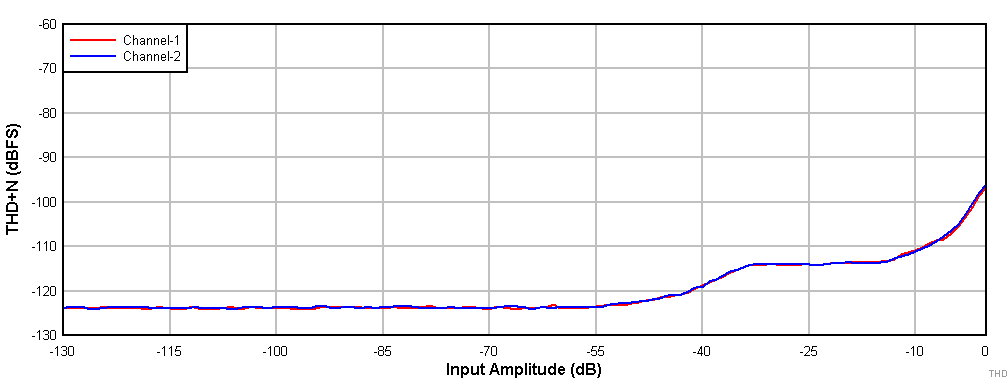
With DRE Enabled

With a –60-dBr Input

With a –1-dBr Input
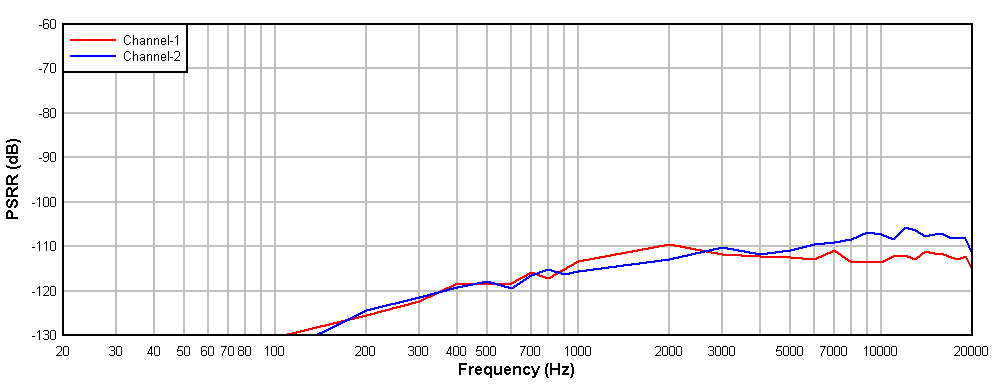
Ripple Frequency With a 100-mVPP Amplitude

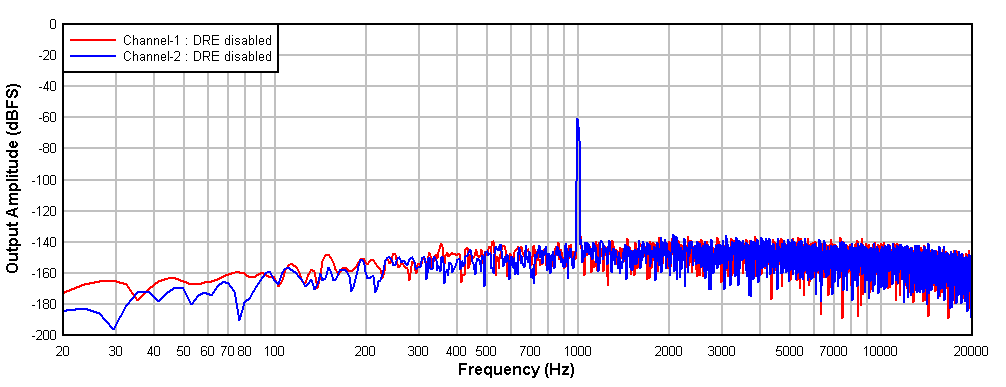


With a –1-dBr Input

Ripple Frequency With a 100-mVPP Amplitude

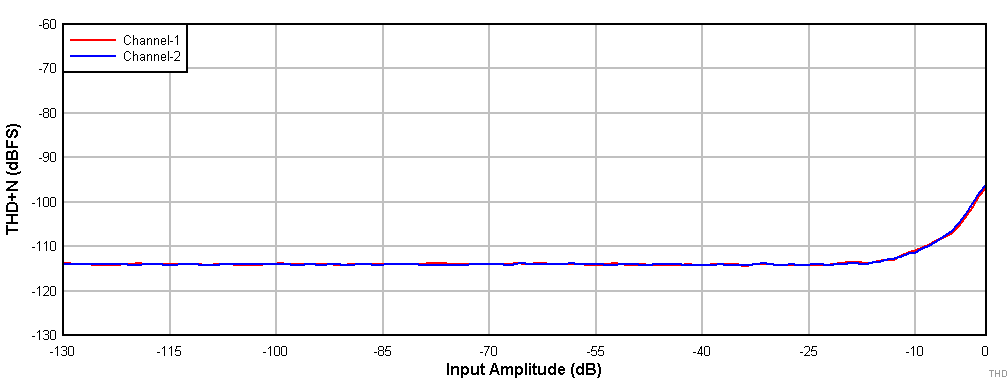
With DRE Disabled
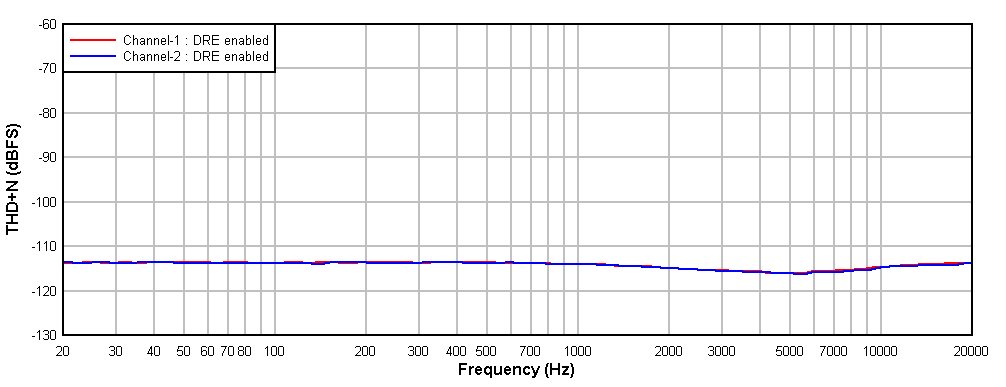
With a –60-dBr Input

With a –12-dBr Input
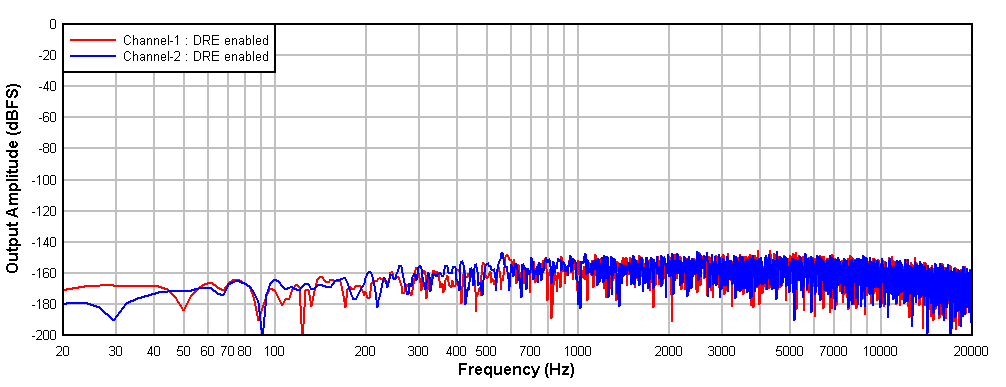



With a –60-dBr Input
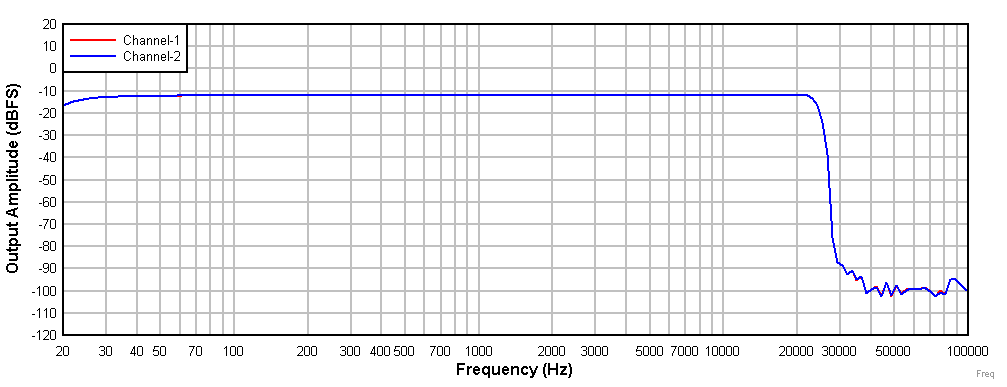
With a –12-dBr Input

